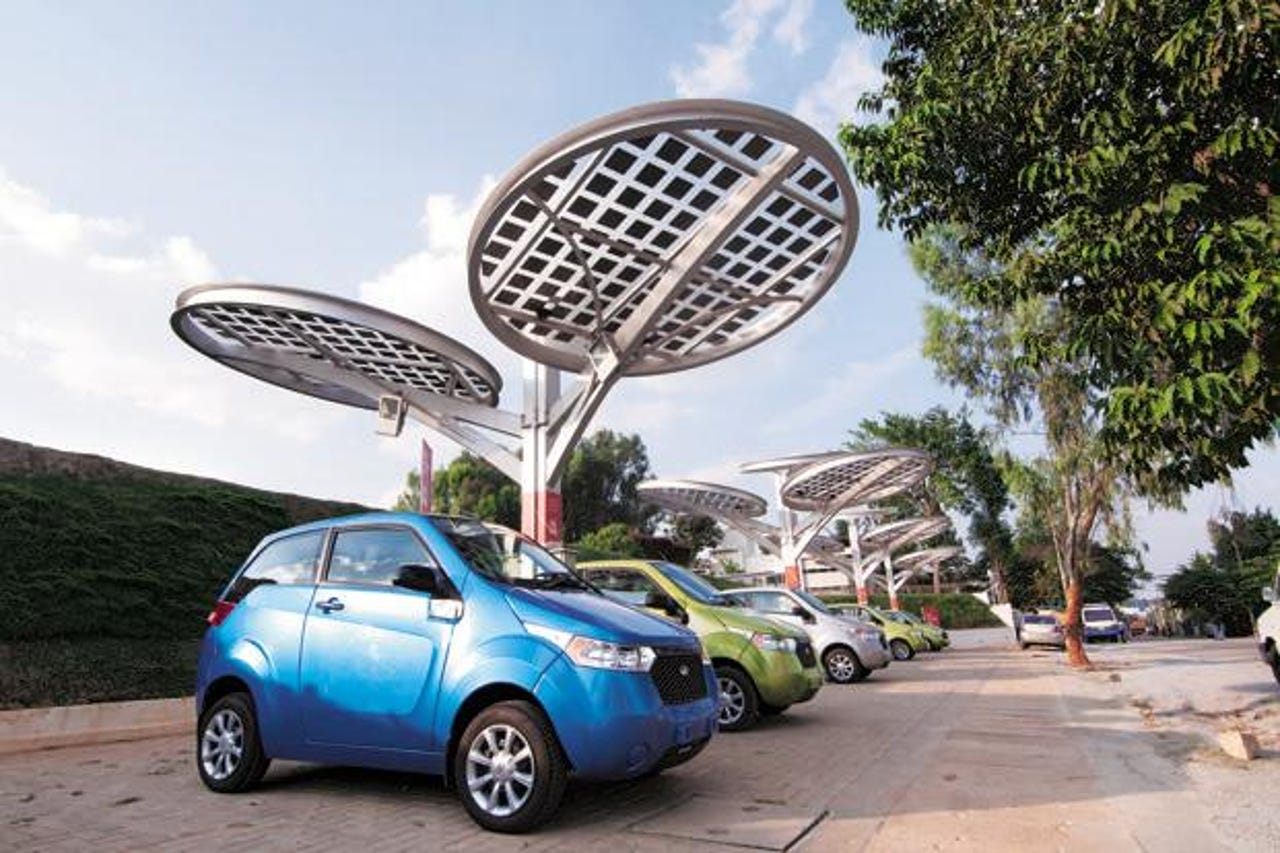Bhutan goes electric while India spins its wheels

Just last week, Carlos Ghosn, CEO of Nissan Motor, voyaged to the picturesque Himalayan kingdom of Bhutan to a seal a deal with the government that involved using the electric Leaf as the official car of the government as well as taxi operators.
On one hand, this doesn't seem like such a big deal; Bhutan, with under a million citizens, is hardly the kind of country that is going to effect a change in weather patterns compared to heavily polluting India or China. It has an admirable record or reputation in preserving its green heritage — the country has to maintain 70 percent forest cover by law — but this is easy to do when you don't have the pressures of industrialization in order to employ tens of millions of youth.
Still, Bhutan should serve as an example to its neighbor India. Today, a city like Delhi is becoming unliveable, with particulate matter reportedly 20 times what the government has considered an acceptable level, according to this report. The same report states that a NASA photo last year showed a white canopy hovering over the states of Haryana, Uttar Pradesh, and Punjab, and ultimately descending on Delhi, which they flank.
One big problem here is soot from the seasonal burning of crops. However, another major culprit is the rise of the middle-class auto buyer. Indians are snapping them up at a rate never seen before, and many middle-class families house two cars today, resulting in another one of Delhi's hallmark experiences: Fistfights over parking in residential neighbourhoods.
The Indian's appetite for SUVs in urban areas, where might is right, is also beginning to match America's love affair with them. As a result, major cities are often polluted, traffic-clogged nightmares, and it doesn't take much to see the dystopia that will be urban India in another 10 years.
Now, Beijing may be a similarly polluted hell hole, but China at least implemented visionary policies in many of its cities that banned autos in municipal zones and promoted electric vehicles. It also put serious money behind its intentions to explore an electric option.
According to this article, "Between 2002 and 2006, Beijing spent at least $200 million on New Energy Vehicle (NEV) programs, with plans to put out another $15.15 billion into an alternative energy vehicles development plan during 2011-20, much of it going into bolstering R&D programs, with the remainder to be spent on subsidies and infrastructure creation."
As a result, the country has over 15 million electric two-wheelers on its roads, and is actively looking for an electric solution to its autos.

India, on the other hand, has made a lot of noise about catalysing the electric industry here, but has done little. Promises of an electric car subsidy haven't materialized, stymieing the efforts of promising companies like Reva, and its nifty new cars such as the e2o, which I wrote about here. Ironically, Reva, which was bought over by one of the new auto powers in India, Mahindra & Mahindra, ranks as one of the world's largest producers of electric cars, exporting to over 24 countries. Yet, it barely sells any at home.
Jumpstarting an electric revolution here necessitates a far-sighted and activist government, since we don't have the local Teslas of the world to do it. Only a central power can incentivize auto-free zones and help build charging stations in major parking lots as well as gas stations to allay range anxiety and promote R&D in battery technology — all of which India shows little signs of acting on, especially during a volatile election year.
If it begins to do so even at a basic level, like it did in the past by making all public buses in Delhi run on compressed natural gas (CNG), cost conscious Indians could very well follow, starting what may be a much needed revolution in clean driving.